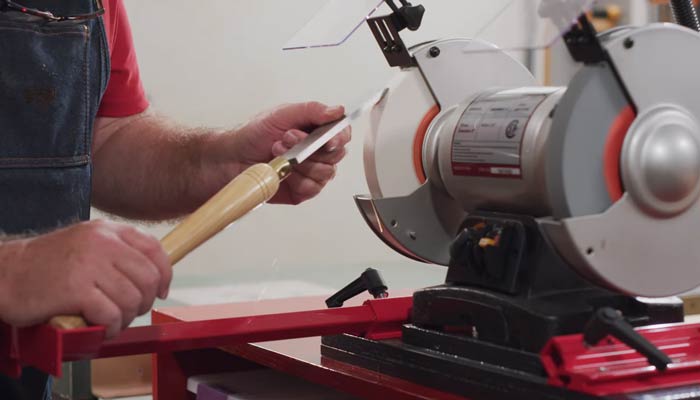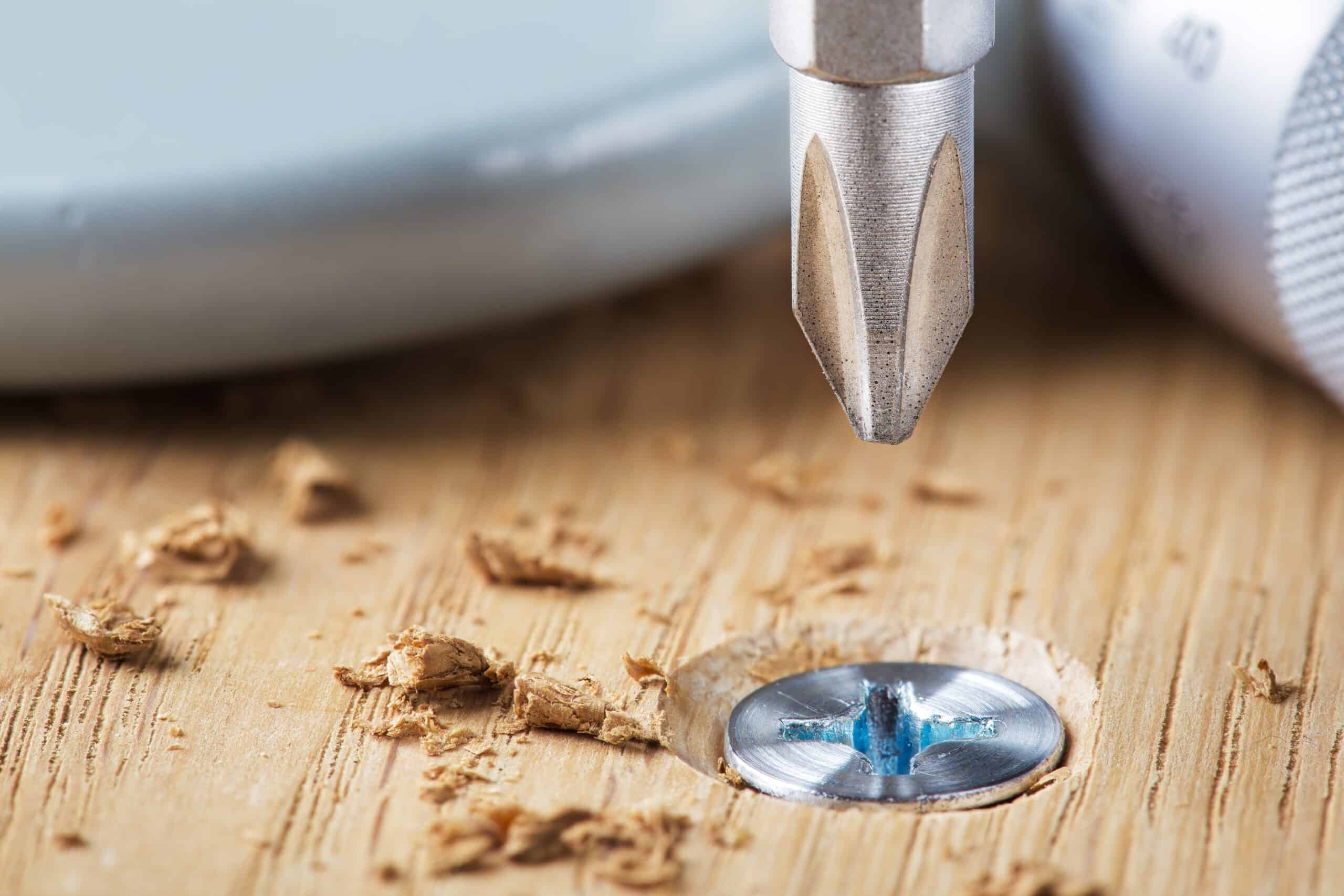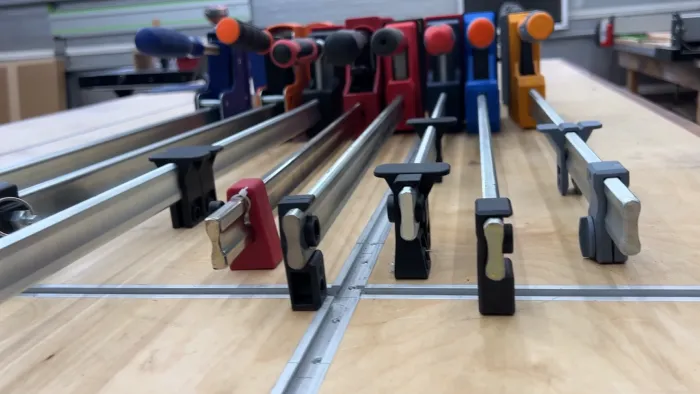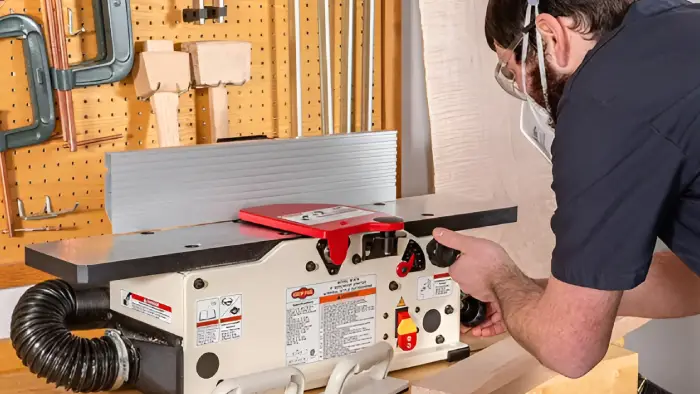WoodenuKnow.com is a participant in the Amazon Services LLC Associates Program, an affiliate advertising program designed to provide a means for sites to earn advertising fees by advertising and linking to Amazon.com and may earn from qualifying purchases.
A blunt tool can hinder your progress in creating attractive woodworks. This may also result in an inferior product. Furthermore, dull tools are dangerous because they take more force to cut, causing accidents.
This is why it is vital to keep your tools sharp. You may own a set of woodturning instruments, but they may not be as sharp as they should be. Therefore, it is crucial to know how to sharpen woodturning tools.
Sharpening your tools is an essential aspect of the process, and it will have a profound effect on how well the instrument performs.
This article will discuss how you can sharpen tools, so continue reading if you want to learn more exciting information about this topic.
What are Wood Turning Tools?
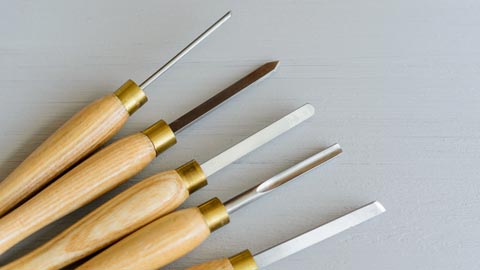
Woodturning was one of the earliest known woodworking techniques and is still popular today.
These tools are the different types of cutting instruments used to produce intricate wood patterns that can be very complex.
These tools are essential for the woodworker. They are used to create various shapes and sizes in wood.
They were traditionally used for hand-manipulated machines, but they also use power-driven lathes today.
There are many different types of tools, but they share one common goal: to help the woodworker create beautiful pieces of art from wood.
Methods of How to Sharpen Woodturning Tools?
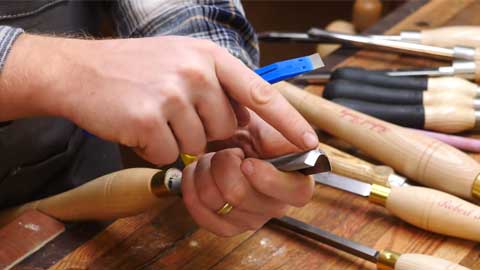
It is essential to keep your woodturning equipment sharpened at all times. Today, woodturners are interested in many different methods of sharpening their tools.
There are many ways you can use yourself or get someone else at home with some knowledge on sharpening equipment, including:
Using a Bench Grinder And Abrasive Pad Combination
The most common way to sharpen tools is by using a bench grinder and abrasive pad combination. It is a versatile method for sharpening a variety of instruments.
You can also use a vari-grind jig to help hold the tools in place while you sharpen them. This is a great way to get accurate and consistent results.
Steps for sharpening tools using a bench grinder and abrasive pad:
01: Use safety goggles or glasses and protective clothes.
02: Carefully measure the abrasive pad to the size of your turning tools (mark with a marker) and cut it by cutting 1 inch at a time.
03: Push the abrasive pad against the bench grinder and sharpen one side of the tools at a time until you reach the desired sharpness, and do this for both sides.
04: If you want to get a more refined edge on your woodturning tool, you can use a marker and ruler with millimeters marked to determine how much metal should be removed from your blades every time you sharpen them.
05: After sharpening the woodturning tool, you can use fine-grit sandpaper to remove any tiny metal shards that may remain and give your blade its final touch.
Using Back Grinding CBN Wheels on the Lathe
Back grinding CBN wheels on the lathe are popular for sharpening tools. They are available in different shapes and sizes.
This is used to sharpen the bevel on a turning tool. The CBN wheels should be matched to the profile of the bevel you are trying to restore. The wheel must be centered on the tool.
The process of sharpening with a back grinding tool is as follows:
01: Mount the 8″ slow-speed grinder in your lathe and adjust it to about 1,725-2,000 rpm.
02: Put on your safety goggles and gloves, and ensure your clothing is tucked in safely.
03: Touch the wheel to the tool’s bevel and spin the tool while applying pressure. You should hold the tool control at a 25-45 degree angle to the wheel.
04: Work your way around the bevel, grinding until you have removed all the damaged metal.
05: Check your progress frequently and stop when you reach the desired sharpness.
06: Remove any burrs or rough edges with fine-grit sandpaper.
Using Belt Sanders
Belt sanders are another popular choice for sharpening tools. They are available in various shapes and sizes, and they can be used to sharpen a variety of tools.
The process of using a belt sander to sharpen equipment is as follows:
01: Make sure your belt sander is unplugged and has no load on it.
02: Place the woodturning tool on the belt sander so that the bevel is facing down and the sanding belt runs parallel to the blade.
03: Apply pressure to the tool and move it back and forth along the belt.
04: Use your marker and ruler to measure how much metal needs to be removed at about every 1/8 inch. The angle of the tool should match the angle that you wish it to be sharpened (25-45 degrees recommended).
05: If needed, use a finer belt sander like 36 or 48 grit sandpaper to remove any tiny metal shards from the woodturning tool.
06: Check your progress frequently and stop when you reach the desired sharpness.
07: Remove any burrs or rough edges with fine-grit sandpaper.
Above these are the most popular ways to sharpen instruments. There are other methods such as using a diamond sharpening stone, but these three methods are the most common and straightforward.
Whichever method you choose, make sure you are patient and take your time. Sharpening tools can be a slow and tedious process.
However, a sharp tool can make your woodturning projects more enjoyable and manageable.
Basic Woodturning Cutting Edge Tools
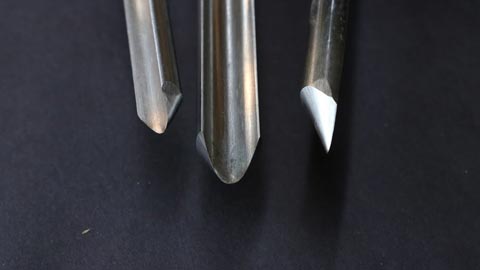
The following list includes the essential woodturning instruments:
Spindle Tools
These tools are used to turn spindles. They have a point at one end and a cutting edge at the other. These tools are:
Spindle Roughing Gouge
Spindle Roughing Gouge is the most basic type of spindle gouge. It is used to remove a large amount of material from the spindle.
Spindle Gouges
These are more complex sharp tools than the spindle roughing gouge. It has a flute that runs around the circumference of its hollow shape.
They are used to turn large diameters faster than other tools, making them ideal for bowl-turning projects.
Chisels
Chisels are used to cut off the end of the spindle. These sharp tools are also used to cut more significant amounts of wood.
Parting Tools
Parting tools are used to create flat surfaces on the spindle. They allow you to cut off disks or rings freehand, but they cannot produce sharp edges.
Faceplate Tools
Faceplate tools are used on faceplates/bowl gouges. They shape the wood into a bowl or any other 3D shape on the lathe. The following are types of faceplate or bowl gouges turning instruments:
Bowl Gouges
Bowl gouges are used to remove the bulk of material from a bowl. The blade is offset and has a bevel on one side and a flat edge.
Bowl Gouges 3⁄4″ skew sharpening setup keeps a few accessories close to your lathe and will encourage you to keep an edge on your tools.
Scrapers
These tools give you finishes that no other tool can produce, making them one of your most important tools.
They cut through the wood fibers, scraping them off the bowl to create a smooth surface.
Skews
These are similar to scrapers in that they cut wood off very quickly and leave behind a fine finish.
However, this skew chisel has a blunt cutting edge which is used for cutting curves rather than flat surfaces.
Sharpening Woodturning Tools: The Requirements
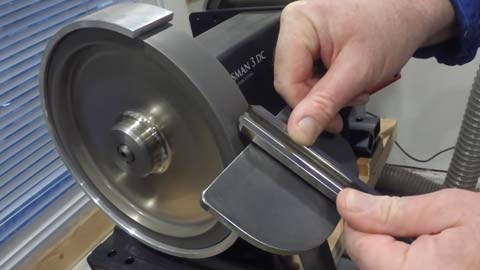
Requirements for sharpening tools are:
- A bench grinder
- An abrasive pad
- Safety goggles or glasses
- Heavy gloves
- A protective cloth
- A marker and a ruler with millimeters marked
Effective Tips for Sharpening Turning Tools
There are a few tips that can help you when sharpening tools:
- Use safety goggles or glasses and protective clothing.
- Ensure your tools are clean and free of dirt, oil, and other debris.
- Use the proper grinding wheel or belt for the tool you are sharpening.
- Check your progress frequently and stop when you reach the desired sharpness.
- Remove any burrs or rough edges with a fine-grit sandpaper.
- Keep your turning tools sharp, and they will serve you well for a long time.
Follow these tips, and you will be able to restore your woodturning instruments to excellent condition again.
Why Should You Sharpen Your Tools Regularly?
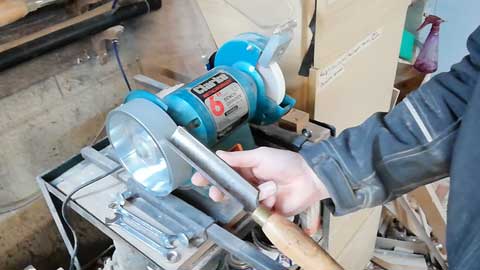
Many people believe it is necessary to sharpen their tools because the blades become dull with repeated use.
Long periods without use can cause rust buildup, moisture, and dirt to get trapped in the tool’s delicate pores.
As a result, it becomes more difficult for your tool to cut through wood or other materials easily. Regularly sharpening your tools will keep them in good condition and make carving easier due to the sharper blade.
Sharpening your tools is also an excellent way to inspect the tool for any damage that may have been caused during use.
By catching any damage early, you can prevent it from getting worse and causing further problems with your project.
It is always a good idea to keep your tools in excellent condition so that you can continue creating beautiful woodturning without any difficulty.
Most Common Mistakes People Make When They Sharpen Their Tools
The most common mistakes people make when they sharpen their woodturning instruments are:
- Not using the correct grinder or belt for the tool.
- Not taking their time and being patient.
- Sharpening the blade too much can cause the tool to become too brittle and break.
- Not remove any burrs or rough edges with a fine-grit sandpaper.
You can make the sharpening process easier and more efficient by avoiding these mistakes. Take your time and be patient when sharpening your tools, and you will be able to achieve the desired results.
The Best Way to Keep Your Tools Sharp
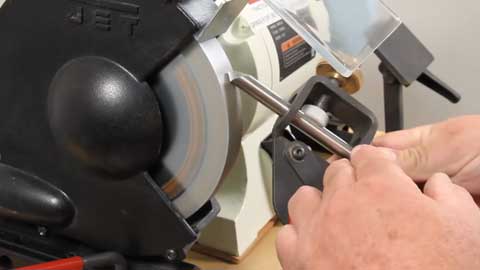
One of the best ways to keep your woodturning instruments sharp is to use a diamond sharpening stone. This method is a little more time-consuming, but it will help to keep your blades in good condition.
Another way to keep your tools sharp is to use a honing guide. This will help you maintain the correct angle when sharpening your tools.
Make sure that you are also patient when sharpening your tools. Take your time and be careful not to over-sharpen them, which can cause the blade to become brittle and break.
Finally, be sure to remove any burrs or rough edges with fine-grit sandpaper so that your tools are ready for use.
FAQs
Here are some frequently asked questions by people who enjoy woodturning:
01. At What Angle Do You Sharpen Wood Lathe tools?
When sharpening tools, 45 degrees is generally a good grinding angle. Maintaining the edges at 90 degrees will assist in keeping the tool square to the wheel.
02. How Do You Sharpen Carbide Woodturning Instruments?
Carbide woodturning instruments can be sharpened with a diamond wheel or belt sander. These tools tend to dull quickly, so make sure you sharpen them often.
03. How Do You Sharpen Scrapers?
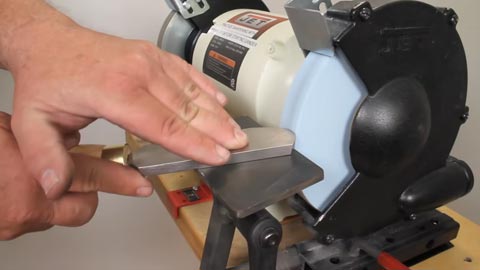
A honing guide is essential for scrapers to maintain the correct angle. You can use a grinding wheel, belt sander, or diamond sharpener to sharpen the blade.
04. How Often Should I Sharpen My Tools?
You should sharpen your tools according to how often you use them and what material they are used on.
Generally, you should sharpen your tools about once every 15 to 30 minutes if you are using the same tool continuously.
05. How Can I Use a Diamond Sharpening Stone for My Tools?
To use a diamond sharpening stone for tools, you need to soak the stone in water for about 10 minutes. Then, apply a drop of dish soap to the stone.
Next, you should apply some water to your beveled tool’s blade. Use the tool to push and pull the diamond sharpening stone back and forth. Apply moderate pressure while doing so.
06. What are Honing Guides Used for When Sharpening Tools?
A honing guide can be used to help you maintain the correct sharpening angle. Some guides have a single cutaway to create a cylindrical
07. How Do You Know If Your Tool Needs to be Sharpened?
If you notice that your tool has become dull or is making marks on your project, it probably needs to be sharpened.
Conclusion
It never hurts to sharpen your tools, whether you’re a novice or an expert. Sharpening tools is not complicated and can help maintain the blade’s edge without breaking.
This guide was created significantly to assist those who wish to learn how to sharpen woodturning tools, just like you.
Take your time when sharpening; over-sharpening may cause the blade to break.

